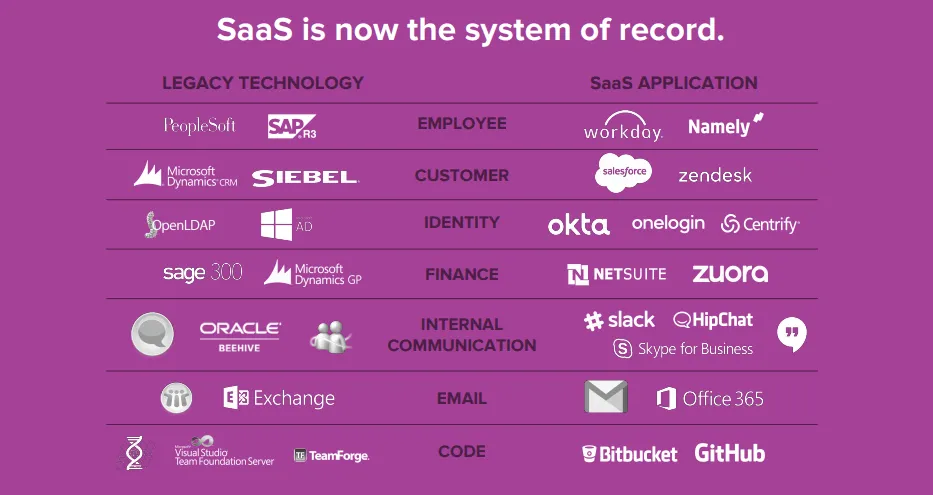Digital Workplace: A Proactive Step for the Future of Work

In an article about the untethered workforce by Michael Brinker and Jeff Schwartz, Brinker – global leader for Deloitte Digital – discusses how smart devices are transforming the way we work, which is “especially true for the 70% of workers who don’t sit behind a desk every day”. And concerning the use of personal devices in the workplace, a report by McKinsey, BYOD: From company-issued to employee-owned devices, points out that “nearly 90% of employees use smartphones and tablets to do at least 25% of the work they formerly did on their PCs”.
We now live in an increasingly digital world where work is no longer a physical office space that we go to in order to perform our daily tasks and responsibilities. Instead, work has become location agnostic. Employees can work from anywhere and anytime.
As a result, digital workplaces are increasingly becoming the future of work as they give employees the flexibility to work from any location without losing out on productivity. In fact, according to Avanade’s definitive digital workplace research, organizations have seen a 67 percent increase in productivity, a 53 percent increase in employee engagement, and a 43 percent increase in revenue by implementing digital workplaces.

Table of Contents
But First, What Is a Digital Workplace?
As a virtual replacement of the physical office space, a digital workplace offers employees the complete set of digital tools they need to successfully manage their everyday work. Though the exact definition of a digital workplace can vary greatly depending on the organization’s size, requirements, and business challenges, at the core of it all, a digital workplace is about streamlining internal business processes and improving the overall employee experience.
With a digital workplace, it becomes possible to integrate all the disparate business applications, which employees can then access through a unified platform. A digital workplace platform lets you:
- Communicate and collaborate seamlessly
- Digitize business processes and transform them into streamlined workflows
- Automate repetitive processes
- Establish agile project management principles
Digital Transformation Starts With a Digital Workplace
According to a 2018 survey by ZDNet’s sister site, Tech Pro Research, 70 percent of survey respondents said that their companies either have a digital transformation strategy in place or are working on one. In fact, organizations around the world, based on IDG’s State of the CIO, have spent close to $2 trillion in just 2019 on digital transformation.
But digital transformation isn’t just about investing in the latest technological trends. You cannot expect your organization to become more efficient just by investing in new technology. Digital transformation is about understanding the bottlenecks and issues faced by the organization and then implementing technological solutions that can help resolve those issues.
While the technologies that companies implement vary greatly according to their unique requirements, in all cases, digital transformation is about making it easier for employees to manage their work.
Digital transformation within an organization should always start with the implementation of the right digital workplace tool that can help employees manage their work responsibilities in a better way and, in turn, save time.
The Role of Digital Workplace in the Future of Work
Streamline Business Operations
When all the departments of a company work in a disparate manner, it becomes challenging for employees to collaborate. Moreover, when one department doesn’t know what is happening in another department, it can lead to bigger problems within the company. Using hand-crafted API connectors to try to link databases isn’t the solution either.
By providing a single platform to access all the required processes, projects, tasks, documents, and files, a digital workplace allows different departments of an organization to connect and work together seamlessly.
A digital workplace starts everyone off on the same platform and gives them the tools they need to organize their collaborative work. Whether it’s process automation or highly visual project boards, your unified platform should make it very easy for team members to work closely together. With everyone working together in the same place, reducing waste and finding core information becomes much easier.
Improve Employee Engagement
Disengaged employees directly lead to a loss of productivity and revenue. In fact, disengaged employees, according to an article smarp about important employee engagement statistics, can cause organizations over $450 billion every year.
Business leaders should always keep in mind that employees are a company’s biggest asset and not the technology they use. After all, no matter how much you invest in the latest technology and tools, if your employees are disengaged, then all of your investments will go down the drain.
A digital workplace is a way to show that you care about the employee experience as much as you do about the customer experience. Companies often invest huge amounts of money in their front-facing systems as well as in their core backend ERP systems. But all that happens in the middle gets left up to email, spreadsheets, and dozens of small tools.
A well-designed digital workplace makes your employees feel like their user experience is valued just as much as the customers’.
Incorporate Integration and Mobility
BetterCloud’s 2017 State of the SaaS-Powered Workplace Report states that companies around the world now use close to 16 SaaS apps on average, and the number is steadily increasing. If these business applications are difficult to integrate, they will actually cause even problems for the employees instead of helping them. Employees end up spending the majority of their time toggling between different applications.
A digital workplace platform lets employees access all the required applications through a unified interface, which saves their time and allows them to focus on their core work responsibilities.
Rather than having a separate app for leave requests, purchase orders, content requests, new hire requests, and dozens of others, you can bring all of these functions on to a single platform. This not only creates a better experience for employees but also ensures better data reliability and cuts down on IT costs to integrate new systems.

Preparing for the Future With the Digital Workplace
Organizations need to change the way employees work in order to embrace the changing dynamics of the workforce and get ahead of the competition. To move towards a truly digital future of work, leaders must first find a solution that helps employees stay engaged, active, and organized with all of their core work and processes. A digital workplace will not streamline your operations but will offer your team a better, more connected experience. Start today by researching digital workplace tools and find one that suits your needs.
Although the digital workplace offers employees the tools they need to do their work wherever they are in the world, they still need to learn how to use the software platforms they are required to work with. Download our whitepaper for more information on how to introduce new software in your company and ensure your employees learn how to fully navigate any software right from the very start!

